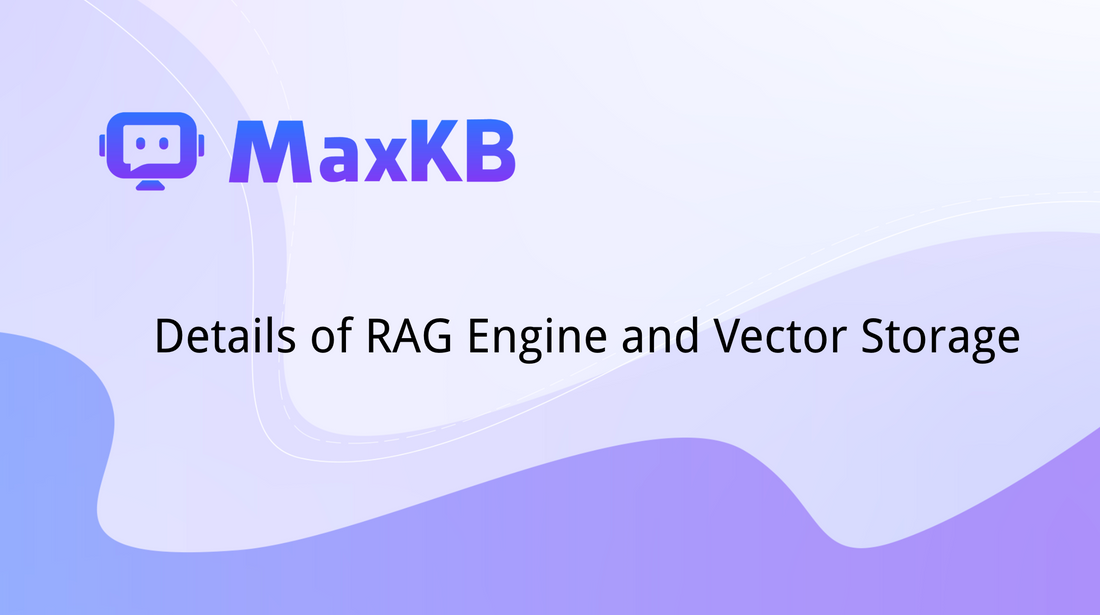
Implementation Details of MaxKB's RAG Engine and Vector Storage
Share
Overview
MaxKB implements efficient retrieval and intelligent generation for massive document collections through a modular RAG (Retrieval-Augmented Generation) engine. Its core strength lies in combining automatic document segmentation, vector-based retrieval, context assembly, and large language model generation. MaxKB supports both local model storage and integration with various external vector databases, allowing flexible balance between accuracy, performance, and cost.
Introduction
RAG technology first retrieves relevant content from a knowledge base, then feeds these results as context into a generation model, significantly enhancing the accuracy and reliability of responses. As an open-source enterprise-grade AI assistant, MaxKB features a comprehensive RAG pipeline suitable for customer service, internal knowledge management, academic research, and various other scenarios.
RAG Engine Core Architecture
Document Segmentation and Preprocessing
- Tokenization and Chunking: Utilizes efficient tokenizers to process raw documents and chunks them according to predefined length thresholds, ensuring each document segment is neither too long (causing truncation) nor too short (insufficient information).
- Embedding Generation: Generates vector representations for each document segment by calling embedding models (such as DeepSeek, moka-ai/text2vec, etc.), with storage options in float32 or float16 format as needed.
Vector-Based Retrieval
- Similarity Search: Quickly locates the most relevant Top-k document segments from vector storage based on cosine similarity or dot product calculations, meeting real-time requirements.
- Bulk Querying: Supports batch vector retrieval (bulk query) to reduce multiple network interactions and improve throughput.
Augmented Generation
- Prompt Assembly: Combines retrieved document segments into the prompt according to predefined templates, forming a comprehensive context.
- Parameter Tuning: Provides configuration options for Top-k, Top-p, temperature, generation length, and other parameters to flexibly control the accuracy and diversity of responses.
Vector Storage Layer
Local Model Storage
By default, MaxKB places vector model and generation model binary files in the /opt/maxkb/model directory, automatically loading them at startup and supporting dynamic model switching and version rollback.
External Vector Database Integration
Through LangChain's VectorStore interface, MaxKB seamlessly connects with vector databases such as pgvector, Milvus, and Elasticsearch, adapting to large-scale and high-concurrency scenarios.
Performance Optimization
- Floating-Point Compression: Can compress float32 vectors to float16 to reduce storage and transmission costs while maintaining retrieval precision.
- Caching Mechanism: Implements memory caching for frequently queried results, reducing backend access frequency and significantly lowering latency.
- Index Preheating: Preheats critical index data during system startup or off-peak hours to ensure optimal query performance during peak periods.
Security and Multi-tenancy
MaxKB provides Role-Based Access Control (RBAC), combined with Kubernetes namespace isolation and network policies, ensuring data isolation and security compliance in multi-tenant environments.
Summary
MaxKB's RAG engine achieves efficient and reliable knowledge question-answering capabilities by combining document segmentation, vector-based retrieval, and generative models. It supports both local and external vector storage solutions and finds the optimal balance between performance and cost through parameter tuning, caching, and compression strategies, making it suitable for various enterprise-level scenarios.
